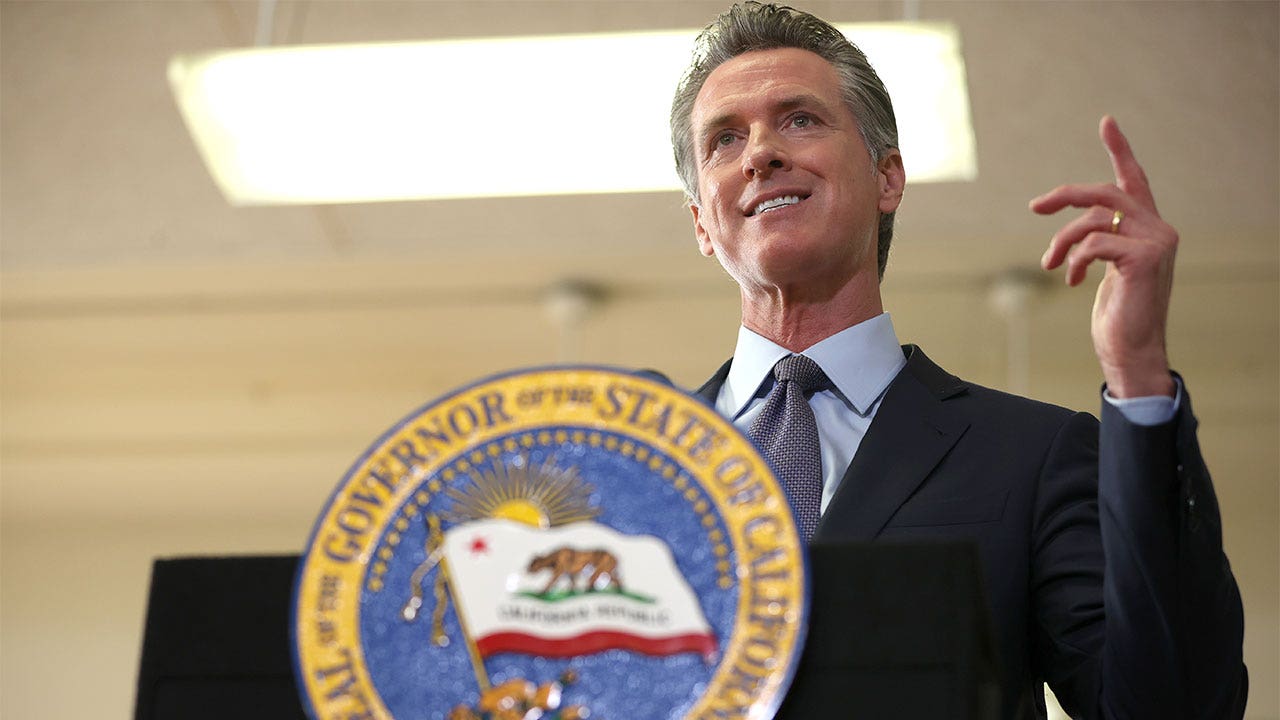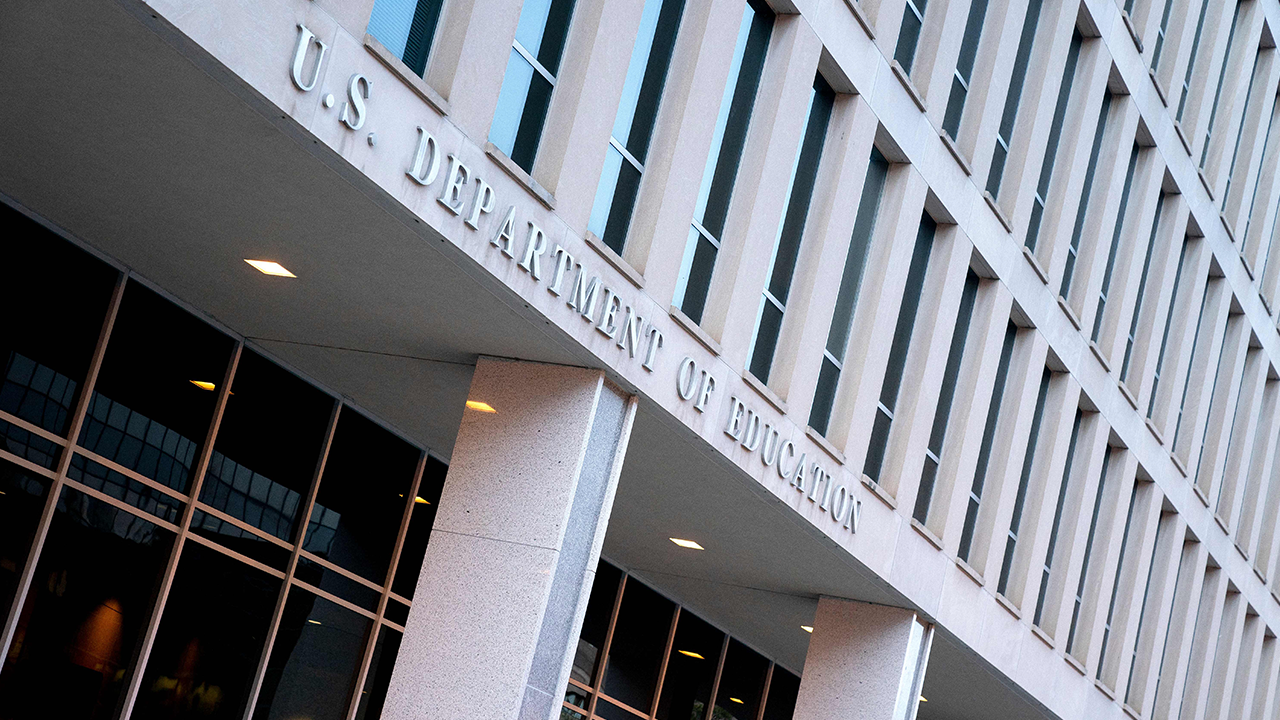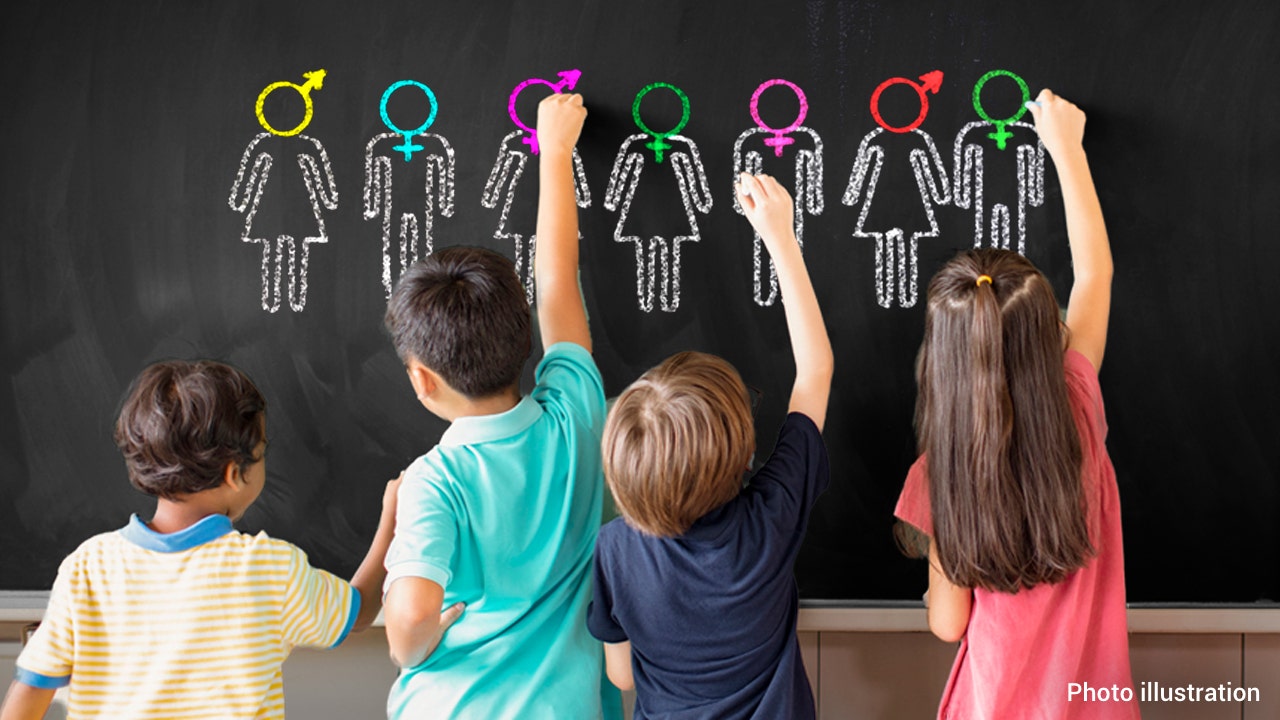A growing share of Americans—three in 10—identify as “none.” Or, none of the above when asked about their religious affiliation. Houses of worship are emptying, and those still left in the pews probably expect their spiritual shepherds to welcome more prayer, not less.
It’s what makes pope-francis” target=”_blank”>Pope Francis<
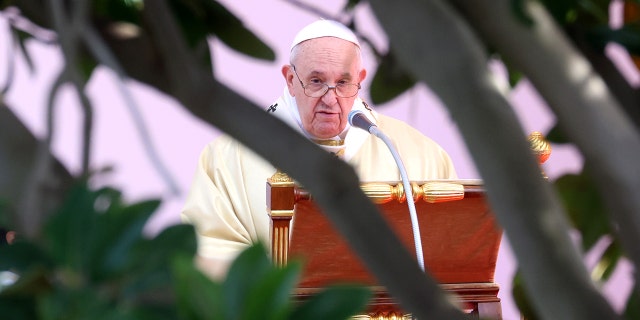
Pope Francis celebrates Mass at the Catholic University of the Sacred Heart on Nov. 5, 2021, in Rome, Italy.
(Franco Origlia/Getty Images)
Pope Francis told bishops from the Czech Republic in 2014 that he “cannot understand the younger generation” who flock to the old Mass. A couple of years later, the pope wondered to an interviewer why so many young Catholics prefer to praise God in Latin on Sundays. “Why so much rigidity,” Francis asked. “This rigidity always hides something, insecurity or even something else.” And in 2019, Pope Francis ridiculed young priests who wear traditional cassocks along with the white collar—even suggesting they have “moral problems and imbalances.”
Stereotypes may often be shortcuts to the truth, but not always. And certainly not in this case. In my experience, it is not just the elderly who like the smells and bells of the Church’s old rituals—a great many young people love traditional worship. I joke that my old parish’s Latin Mass is the “teen Mass.”
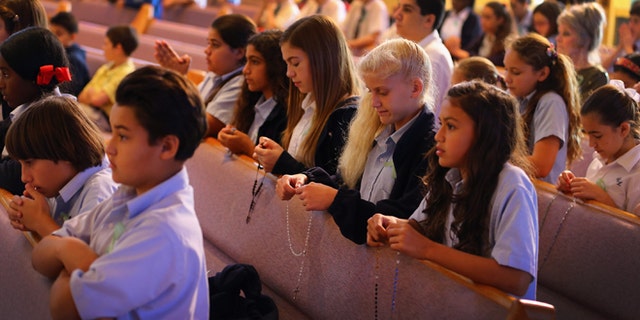
Children pray during a service at St. Rose of Lima School on Dec. 21, 2012, in Miami, Florida.
(2012 Getty Images)
Yet last summer the pope released a letter that restricted the use of that Mass. It marked a disappointing departure from his predecessors, and a peculiar use of the papacy—as if the pontiff were leading a new presidential administration that reverses executive orders of prior presidents from different political parties.
But popes aren’t presidents. The papacy is supposed to eschew politics and instead focus on the spiritual needs of the faithful. That was the late Pope John Paul II’s approach. As was Pope emeritus Benedict XVI’s. Both noticed an increasing number of faithful were spiritually enriched by the Church’s old rites and rituals.
REV. ROBERT SIRICO: CHRISTMAS MEANS GOD HAS A DOG IN OUR FIGHT
Francis’s recent predecessors both generously expanded opportunities to believers who worshipped the old way—not simply because it is old, but because it is beautiful and true. “What earlier generations held as sacred, remains sacred and great for us too,” the pope emeritus wrote in 2007, “and it cannot be all of a sudden entirely forbidden or even considered harmful.” At that time only a little more than 200 Latin Masses were celebrated in the United States. Today, more than 650 venues reportedly offer the old form of worship in all 50 states and in the District of Columbia.
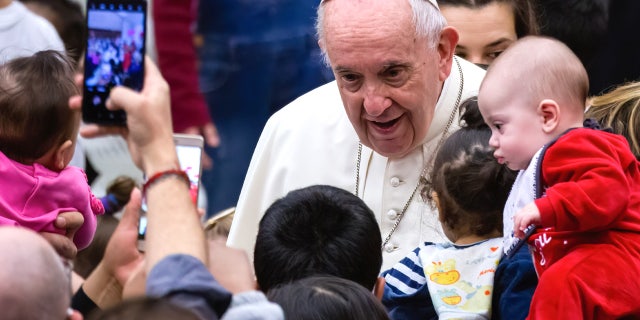
Pope Francis greets and blesses the children assisted by the Vatican’s Santa Marta Pediatric Dispensary at the Paul VI Hall on Dec. 19, 2021.
(Stefano Costantino/SOPA Images/LightRocket via Getty Images)
Perhaps the most draconian implementation of the pope’s restrictions on communities dedicated to the old Mass came just last week—yes, at the onset of Christmas festivities—from the cardinal archbishop of Chicago, Blase Cupich. A progressive on many things, Cupich is wont to align himself with many of campaigns of the left such as conflating intrinsic moral evil with prudential policy matters. No matter how you view it, no Catholic should give keeping the minimum wage just the same moral weight as protecting life in the womb. Of course, Cupich’s conflation gives cover to prominent pro-choice Catholics, like House Speaker Nancy Pelosi and President Joe Biden.
But that “consistent ethic of life” idea wasn’t Cupich’s. It originated with his late predecessor, Cardinal Joseph Bernardin, who was also a hero for political liberals—but who also happened to be the first to expand opportunities for Chicagoans to worship the old way. Priests at St. John Cantius Church on the city’s west side seized that opportunity to restore the sacred in all things, and then watched the faithful flock from all over to what had been an all but abandoned parish. It grew from merely 30 in 1988 to more than 2,000 families today. The church itself was even voted the most beautiful in the country, and perhaps that had a lot to do with its beautiful liturgies.
When I was pastor of Sacred Heart of Jesus Church in Grand Rapids, Michigan, we had a very similar experience. It, too, was on the verge of closing in 2012, but as we sought to restore the sacred in the liturgy (we, like Cantius, celebrate both the old and new Masses) our school grew from 68 students to about 400 today—and it’s still growing.
CLICK HERE TO GET THE OPINION NEWSLETTER
In this moment of the “nones,” some of the most remarkable growth in the Catholic Church seems to come from churches where the liturgies are “ever ancient, ever new.”
CLICK HERE TO GET THE FOX NEWS APP
Too many spiritual shepherds now want to contain that contagious growth as if it were some kind of virus. But perhaps what the Church—and our world—need most right now is a pandemic of prayer.






